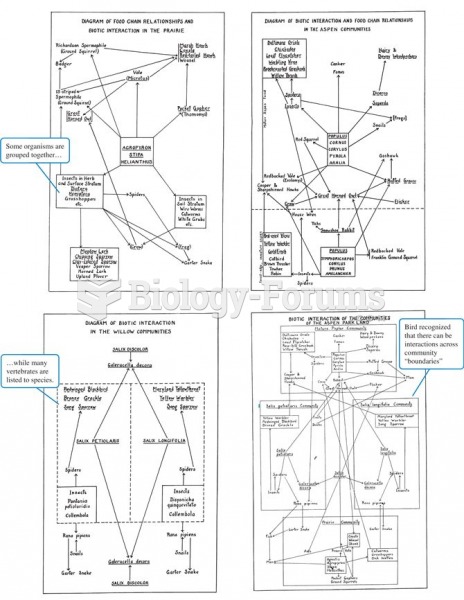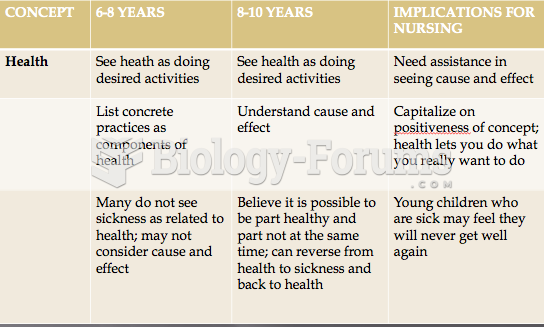Answer to Question 1
Answer: 1, 2, 3
Explanation: 1. Advantages of home visits include obtaining a complete picture of the client situation, identification of environmental influences on health, the ability to view relationships among family members and with the larger community, opportunity to see actual performance of activities of daily living, and better evaluation of intervention effects. The client requesting no further visits because of the neighbors and the concern about payment for services are disadvantages to making home visits.
2. Advantages of home visits include obtaining a complete picture of the client situation, identification of environmental influences on health, the ability to view relationships among family members and with the larger community, opportunity to see actual performance of activities of daily living, and better evaluation of intervention effects. The client requesting no further visits because of the neighbors and the concern about payment for services are disadvantages to making home visits.
3. Advantages of home visits include obtaining a complete picture of the client situation, identification of environmental influences on health, the ability to view relationships among family members and with the larger community, opportunity to see actual performance of activities of daily living, and better evaluation of intervention effects. The client requesting no further visits because of the neighbors and the concern about payment for services are disadvantages to making home visits.
Answer to Question 2
Answer: 1, 2, 3
Explanation: 1. Initiating a home visit can present challenges to the nurse and create uncertainty and fear in the client. It is important for the nurse to state the reason for the visit and establish expectations from both perspectives. This allows the start of building a relationship with the client and establishes rapport. Revealing that the neighbors made the referral could be negative, and the nurse needs to respect this as a confidential source. Informing the client that her name has been given to a local women's shelter could irreparably damage any relationship the nurse has with the client and halt any progress the nurse may have made in making the client feel sufficiently at ease to speak of any potential abuse.
2. Initiating a home visit can present challenges to the nurse and create uncertainty and fear in the client. It is important for the nurse to state the reason for the visit and establish expectations from both perspectives. This allows the start of building a relationship with the client and establishes rapport. Revealing that the neighbors made the referral could be negative, and the nurse needs to respect this as a confidential source. Informing the client that her name has been given to a local women's shelter could irreparably damage any relationship the nurse has with the client and halt any progress the nurse may have made in making the client feel sufficiently at ease to speak of any potential abuse.
3. Initiating a home visit can present challenges to the nurse and create uncertainty and fear in the client. It is important for the nurse to state the reason for the visit and establish expectations from both perspectives. This allows the start of building a relationship with the client and establishes rapport. Revealing that the neighbors made the referral could be negative, and the nurse needs to respect this as a confidential source. Informing the client that her name has been given to a local women's shelter could irreparably damage any relationship the nurse has with the client and halt any progress the nurse may have made in making the client feel sufficiently at ease to speak of any potential abuse.







